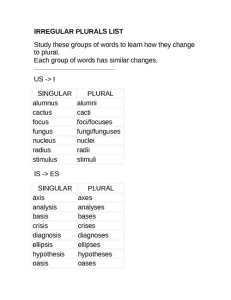Welcome to NounsStarting.com
To get started, please type the starting letter of a noun list in the Search Bar just above this article.
For example:
-Type A to get a list of all of the nouns starting with “a”
-Type CH to get a list of all of the nouns starting with “ch”
For a full list of words use wordrequest.com
A complete List of Nouns by their staring letter:
Every list has categories for: Animals, Body Parts, Feelings, Food, Objects, People, Places, and Plants.
What is a noun?
A noun is word that identifies people, things, and places. From there we can make two classifications: common nouns and proper nouns.
Unlike proper nouns which refer to specific names of people, things, and places, common nouns are actually generic names of nouns. Try to go to your local supermarket, what do you see?
You’ll probably see milk, bread, beef, coffee, eggs, carts, counters, chips, ice cream, tissue, shampoo, detergent, diapers, etc.
All of the italicized words above are examples of common nouns. Aside from naming or labeling general things, this kind of nouns can also refer to general names of places, people, ideas, events, or animals.
Examples:
- park
- actor
- lake
- platypus
- doctor
- starfish
- festival
- museum
- chef
- puppy
When used in sentences, common nouns are introduced by the articles “the,” “an,” or “a.”
Examples:
- I went to the park with my little brother.
- He proudly said that he is an actor.
- The lake is literally freezing.
- When I was a kid, I wanted to become a doctor.
- Spongebob’s friend, Patrick, is a starfish.
Another thing that you should know about common nouns is that they can come in either singular or plural form. You probably already know that “singular nouns” refer to only only one person, animal, place, thing, idea, or event, while the term “plural nouns”means that you are talking about two or more persons, animals, things, places, ideas, or events.
The most common rule for transforming a common noun into its plural form is to add “s” or “es” at the end of the word.
Examples:
- cap-caps
- bottle- bottles
- speaker- speakers
- astronaut- astronauts
- dinosaur- dinosaurs
- peacock- peacocks
- beach- beaches
- island- islands
- birthday- birthdays
- street fair- street fairs
However, there are also some irregular plurals which don’t actually follow a standard set of rules such as these:
What are the Different Usage of Common Nouns?
Common nouns can act as the subject, the direct object, the indirect object, or the predicate nominative.
- Common nouns are usually used as the subject in the sentence. Simply put, the subject refers to the doer of the action or to what or who the sentence is all about.
Examples:
- The painter sold his awesome painting for just a hundred bucks.
In the sentence above, the common noun “painter” is the one who performed the action of selling his painting.
- A doctor must always do his best to save the lives of his patients.
The underlined common noun (doctor) is the one being talked about in the sentence above.
Common nouns can function as the direct object in the sentence. The direct object is the receiver of the action and answers the question “What?”
Example:
- Luke built a treehouse.
The verb in the sentence above is “built.” Now, you can ask “What did Luke build?” Obviously, it was a treehouse. Therefore, the underlined common noun serves as the direct object in the sentence.
Common nouns can serve as the indirect object in the sentence. Basically, the indirect object refers to the receiver of the direct object and answers the question “For whom?”
Example:
- Luke built his daughter a treehouse.
The verb in the sentence above is “built” and the direct object is “treehouse.” Now, you can ask “For whom did Luke build a treehouse?” Just by reading the sentence above, you can easily see that it is for his daughter. Therefore, the underlined common noun is the indirect object in the sentence.
Common nouns can function as the predicate nominative. The predicate nominative always comes after the linking verb and is used to restate the subject.
Example:
- Marion is an athlete.
In the sentence above, you can notice that the underlined common noun restates or stands for the subject “Marion.” Basically, the subject and the predicate nominative are the same thing.
